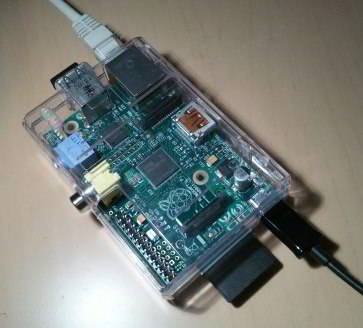
I have to admit I am really impressed by the ideas of Pi use cases that people come up with all around the world (e.g. this list). Raspberry Pi is a microcomputer that almost every engineer passionate about computer science and/or electronics could hardly resist playing around with. Yet, I do not have plenty of creative ideas what to do with it. But, as it turns out, it can perform extremely well doing even simple tasks.
I began my set up with downloading and flashing Raspbian Linux distro into rather high class SD card. It is important to pay attention to card’s class because difference between 3-4 MB/sec and 10 MB/sec transfer speed does matter. It is pretty easy to flash Raspbian and to do the initial set up. You do not have to install it, because you are flashing ready to run image of working system. Then I installed additional packages with services:
- VNC server allows me to detach monitor, keyboard and mouse from the device and to connect to its desktop remotely. This tutorial was the starting point for me.
- SSH server is also a must-have. I can can easily login to the shell with Putty or from Android device using JuiceSSH.
- Last but not least, I started Samba server, which is the main “server role” for my Raspberry Pi.
- I also started nginx web server to be able to access shared folder with a web browser.
I use my Raspberry Pi as a file exchange server between all my devices including laptops and Android devices. As for me, it is extremely useful. I do not have to power on my laptop to send a file to or from the tablet. Now I have the computer that is always on and just serves my files. On Windows I have mapped network drive to the Samba share and on Android device I use X-Plore file manager which has an option to connect to SMB share. One important thing is to set an anonymous Samba share so that Android clients do not have to enter Windows credentials. Just in case, here are the smb.conf contents that work great for me:
workgroup = HOME security = share guest account = pi [LAN_EXCHANGE] comment = LAN EXCHANGE path = /home/pi/LAN_EXCHANGE browseable = yes read only = no guest ok = yes create mask = 0666 directory mask = 0777
And please do not tell me there already exist inventions like this WiFi “Drives”. I am pretty sure they not only are more expensive, but also have nothing to do with aforementioned protocols which IT pros use

